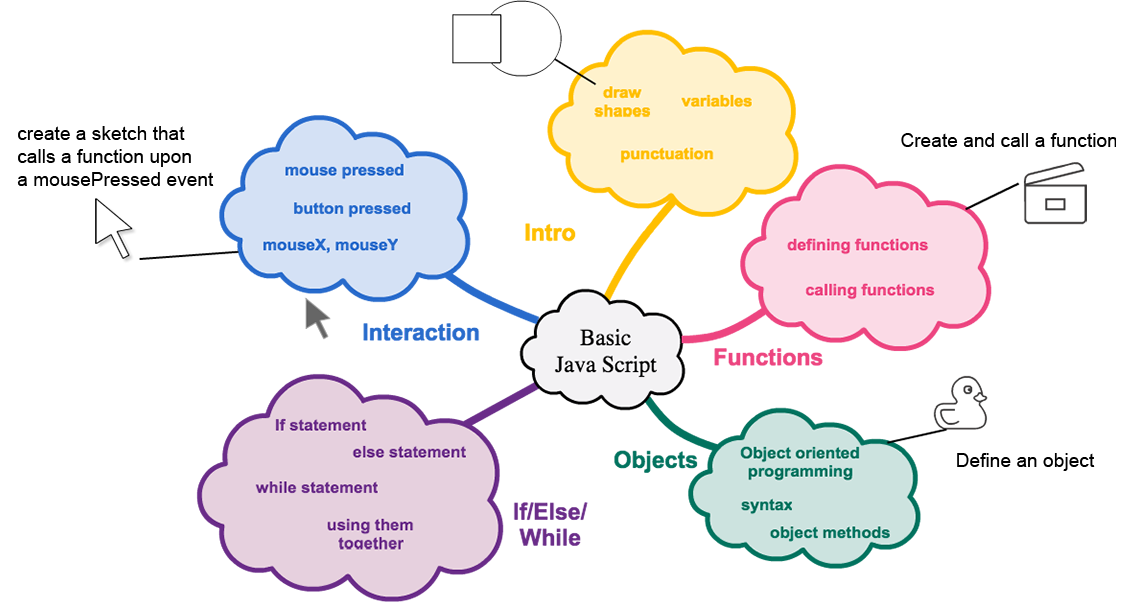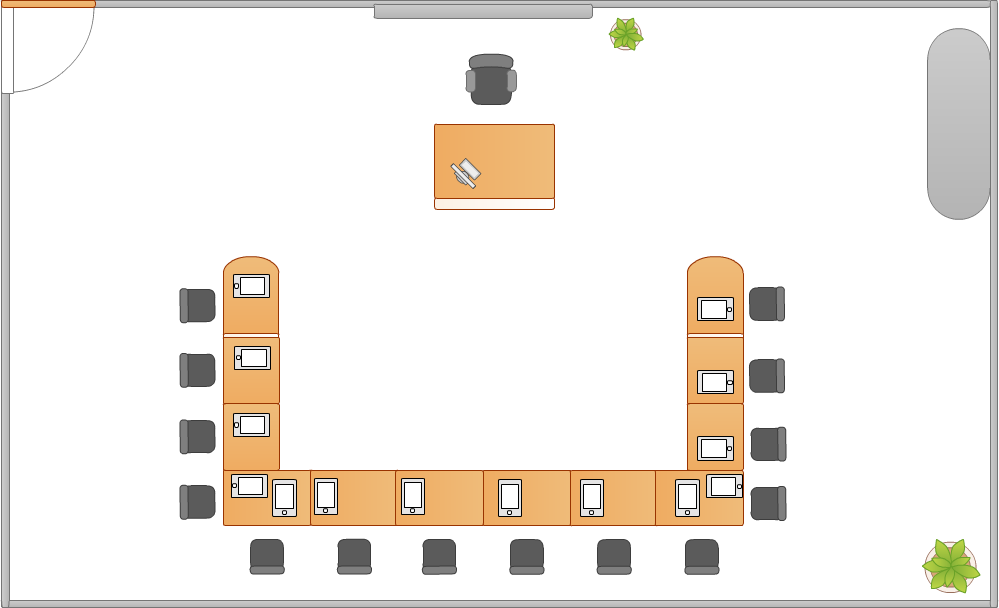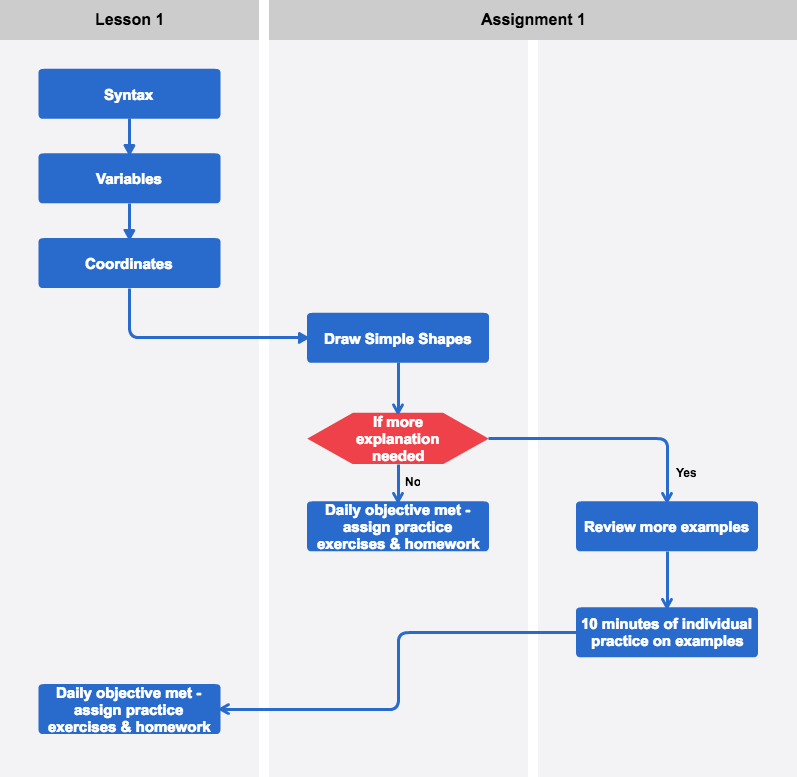Creating lesson plans with Cacoo
Cacoo Staff
December 14, 2021
Education is a fundamental pillar of life, and those in charge of it are shaping the future of the world. This squad of superheroes inspires students of all ages, from pre-K to post-grad, language classes to continuing ed. That’s right, teachers. Your secret is exposed! But no need to hide the cape — embrace it! You have an extraordinary superpower that enriches every student who crosses your path. And this empowerment begins with creating dynamic lesson plans.
With the growing adoption of Common Core State Standards (CCSS) in math and language arts, K-12 education is often tethered to stringent guidelines. Teachers must satisfy a host of requirements before submitting official lesson plans, which can stifle innovation.
In many cases, educators have to fill out forms, spreadsheets, and statements with highly specific guidelines. In the end, there isn’t much wiggle room for creativity in lesson planning. But there can be!
Whether you’re working from scratch or a standard lesson plan template, Cacoo is a great tool to make your lesson plans meatier. You can use Cacoo as your main resource for crafting your core curriculum or as a supplement to your official lesson plan templates.
As summer ends and a new school year approaches, it’s time to dust off your cape and add Cacoo to your squad goals for lesson planning.
Mind map your objectives
Objectives are a major part of the lesson plan — the treasure at the end of the educational journey. Nailing down your objectives will make it easier to chart out your steps to reach those goals. And, of course, you’ll want to create an engaging experience that motivates your students.
To reach an objective, it’s essential to:
- Cover all possible ground
- Explore any opportunity for educating
- Account for each learning style AND
- Prepare for any questions that may arise
So, why not use a mind map? A mind map is a great tool to lay out all your ideas visually and see how they connect back to the objective(s) at hand. Know everything you can about your goals, and mind mapping becomes the key to exercising your power of omniscience.

Go with the flow chart
Once you have a working mind map, you can use it to plot out the steps to your objectives using a flow chart. This technique offers insight into the possible directions a lesson can take. Unleash your chrono vision — the ability to see into the future using your knowledge of the past and present — to guide you. With all your possible lesson options in place, you’ll be able to draft up a solid, well-rounded class schedule.
Craft an organized class schedule
A typical school year is about 180 days. Prepare to unleash the power of time-bending to fit your curriculum into these 36 weeks of teaching. Planning out the school year can be as macro or micro as you need it to be.
Gantt charts are the perfect way to lay out the template of your syllabus for the year, month, week, and day ahead. Start with the big picture and schedule out the year, planning out what units need to be covered in specific timeframes. This can be very broad, offering an overview of your long-term goals for the year. Then, break it down even further by week to work out the specifics.
The daily breakdown drives your lessons toward their ultimate destination. The more detailed, the better. You can use a Gantt chart for this or simply stick with a classic spreadsheet. Charting out your path right down to the minute ensures that you’re buckled in and moving at the proper speed.
In reality, the daily schedule can veer off course, slow down, or speed up, depending on the needs of the students. Not to mention, you may have personal reasons for missing a few days of school. But with the help of your well-plotted schedule, you’ll always be able to stay on track.
Many lesson plan schedule templates are readily available. And although Cacoo provides sample templates, it also gives you the freedom to customize and create a schedule that fits your specific needs.

Create course materials
Whether you’re creating digital documents or printouts, blasting out the power of knowledge through worksheets and other course materials is an integral part of every lesson. Cacoo is the perfect tool for creating compelling course documents for any lesson. You can use this tool to supplement textbook assignments with thought-provoking educational activities.
Just export the document, and you’ll have custom worksheets to share digitally or as class handouts. By going beyond the textbook, you’re able to meet the varying learning styles and interests of different students. At the same time, it’s a great way to build up your own collection of worksheets for future lesson plans.
Collaborate with fellow teachers
The power to collaborate is critical for teachers who share a classroom. Co-teachers and assistant teachers can communicate and edit documents simultaneously with Cacoo. From class schedules to course materials, shared documents are accessible to multiple users at any time.
If a teacher needs to communicate with a sub or a professor with a TA, they can chat directly or leave messages on course documents. Real-time collaboration ensures that all educators are up to date on the material and students are able to continue learning.
Plan engaging lectures
Lectures and class presentations are part of the daily routine, making them prone to repetitiveness. Consider enhancing your lectures with striking visuals to get the students engaged in the content day after day. Put yourself in a student’s shoes. What type of content would drive home the point of your lesson plans and encourage viewers to think deeper about the subject?
With Cacoo, it’s easy to create slides with dynamic diagrams and images that illustrate the topic at hand. You can present one flowing slide through Cacoo directly or export individual slides in the PowerPoint format and share them via presentation software. No need to use your telepathy when you can use Cacoo to visually enhance your lecture.
Assess challenges in lesson plans
Veteran teachers know that not everything goes to plan. You can work hard to come up with the perfect way to introduce new information. Yet, well-thought-out lesson plans can still fall flat. So, what can you do when students struggle to grasp the course material?
First, try to look at the material from multiple perspectives. Did you provide enough context to help students think critically? Did you explain the objectives and activities in a way that’s easy for students to understand? Can you think of more than one way to measure how well students are absorbing the material?
When you need to evaluate lesson plans, a fishbone diagram is a smart tool to spot potential issues in your curriculum. A fishbone diagram helps you break down a problem by identifying root causes and their effects. Sometimes, it’s necessary to audit your own actions as a teacher to figure out how to engage your students. Your superpowers get sharper, and as a result, you discover more ways to be innovative.
Design your classroom layout
With a new list of students in hand, you’re probably anxious to put your feng shui power into practice and start prepping the layout of your new classroom. Even if your layout won’t change much from the previous year, it’s always fun to play with space and set up the optimum environment for the year to come.
By using Cacoo’s “Office Layout” templates as a guide and taking advantage of the Cacoo stencils, you can map out the seating chart for incoming students. Will you stick with standard rows this year, or will it be a classroom-in-the-round featuring the infamous horseshoe? Play around with your design until you find what fits best.

Final thoughts
School may be on recess, but a superhero’s job is never done. With the right organization and some well-mapped-out scheduling, you’re sure to have a clear path to meeting your curriculum goals and objectives. This preparation should leave you excited to take on another year of super-empowering the minds of the future!
*A special thanks to the teachers who provided insight into the current world of education.
This post was originally published on July 7, 2016, and updated most recently on December 14, 2021.



